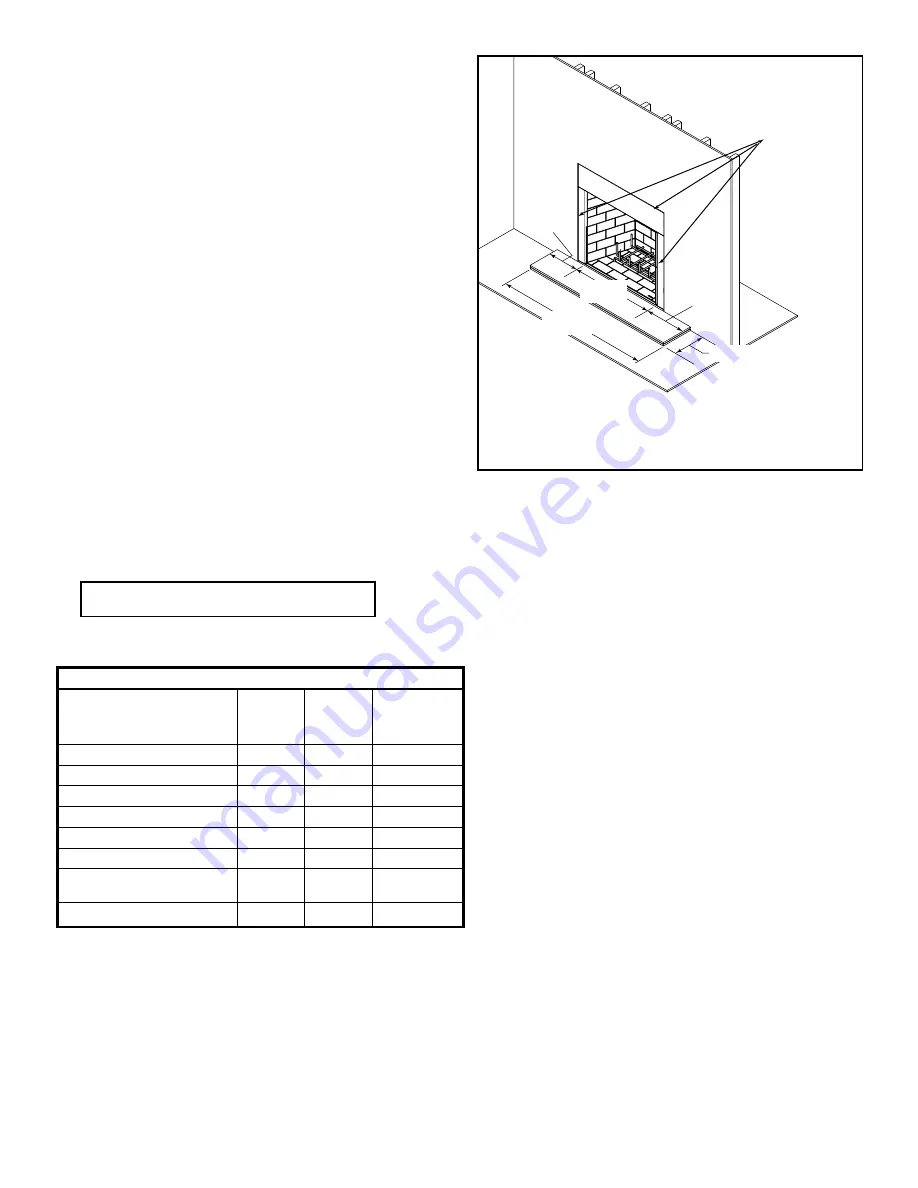
29
Heatilator • Birmingham 42-B Installation Manual • 4059-715 • Rev P • 09/28/15
B. Hearth Extension, Building and Finishing
Table 6.1
R = 1/k x inches of thickness
Table 6.2
WARNING! Risk of Fire!
High temperatures, sparks, em-
bers or other burning material falling from the fireplace may
ignite flooring or concealed combustible surfaces.
• Protective metal hearth strips MUST be installed.
• Hearth extensions MUST be installed exactly as
specified.
A hearth extension must be installed with all fireplaces to
protect the combustible floor in front of the fireplace from
both radiant heat and sparks.
• You MUST use a hearth extension with this fireplace.
• Refer to Figure 7.4 for minimum dimensions.
• This fireplace has been tested and approved for use with
a hearth extension insulated to a minimum R value of
2.06.
• The hearth extension material MUST be covered with
tile, stone or other non-combustible material.
• Manufactured hearth materials will usually have a
published
R value
(resistance to heat) or
k value
(conductivity of heat). Refer to the formula in Table 6.1
to convert a k value to an R value,
• Refer to Table 6.2 for hearth extension insulation
alternatives.
66 in.
(1676 mm)
42 in.
(1067 mm)
12 in.
(305 mm)
12 in.
(305 mm)
20 in. (508 mm) Minimum
Surfaces must be
covered with non
combustible material
Figure 7.4 Hearth Extension Dimensions
Hearth Extension Insulation Alternatives, R Value = 2.06
Material
k per inch
thick
r per inch
thick
Minimum
thickness
required
Hearth & Home HX3, HX4
0.49
2.06
1 in.
USG Micore 300™
0.49
2.06
1 in.
USG Durock™ Cement Board
1.92
0.52
4 in.
Cement Mortar
5.0
0.20
10 1/2 in.
Common Brick
5.0
0.20
10 1/2 in.
Ceramic Tile
12.50
0.08
25 3/4in.
Armstrong™ Privacy Guard Plus
0.46
2.18
1 in.
Marble
14.3-20.0
0.07-0.05
29 1/2 - 41 1/4 in.
















































